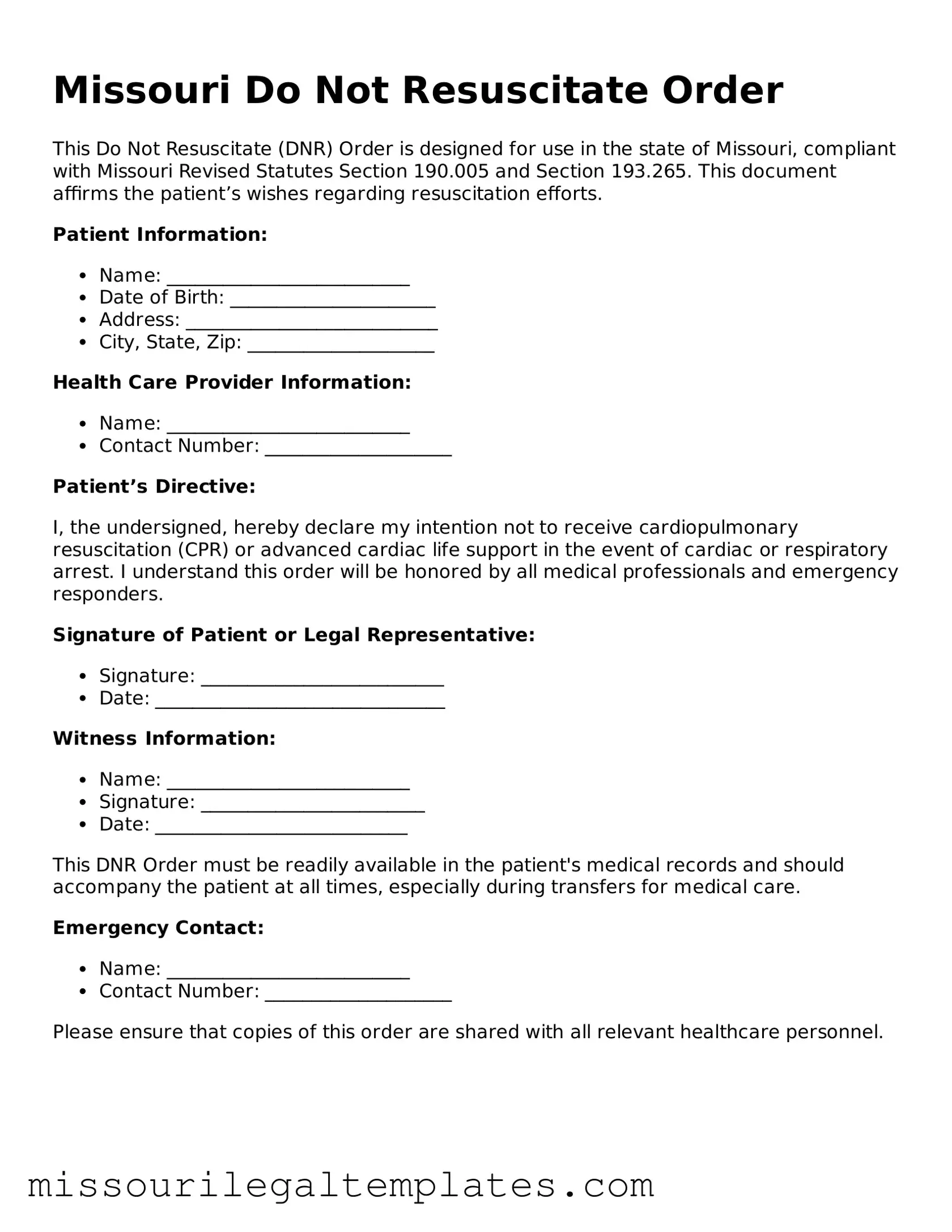Missouri Do Not Resuscitate Order
This Do Not Resuscitate (DNR) Order is designed for use in the state of Missouri, compliant with Missouri Revised Statutes Section 190.005 and Section 193.265. This document affirms the patient’s wishes regarding resuscitation efforts.
Patient Information:
- Name: __________________________
- Date of Birth: ______________________
- Address: ___________________________
- City, State, Zip: ____________________
Health Care Provider Information:
- Name: __________________________
- Contact Number: ____________________
Patient’s Directive:
I, the undersigned, hereby declare my intention not to receive cardiopulmonary resuscitation (CPR) or advanced cardiac life support in the event of cardiac or respiratory arrest. I understand this order will be honored by all medical professionals and emergency responders.
Signature of Patient or Legal Representative:
- Signature: __________________________
- Date: _______________________________
Witness Information:
- Name: __________________________
- Signature: ________________________
- Date: ___________________________
This DNR Order must be readily available in the patient's medical records and should accompany the patient at all times, especially during transfers for medical care.
Emergency Contact:
- Name: __________________________
- Contact Number: ____________________
Please ensure that copies of this order are shared with all relevant healthcare personnel.
